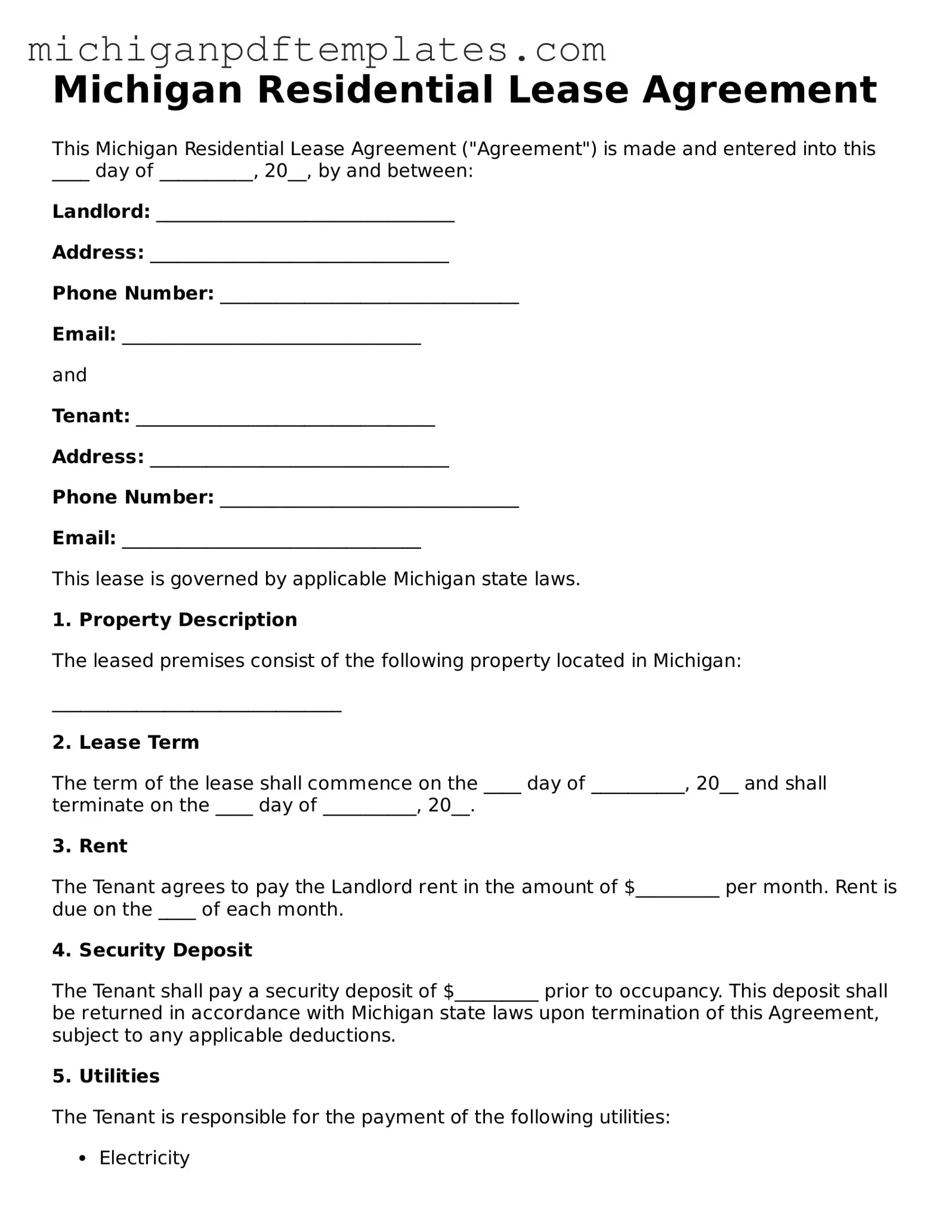Legal Michigan Residential Lease Agreement Template
The Michigan Residential Lease Agreement is a legal document that outlines the terms and conditions between a landlord and tenant for renting residential property in Michigan. This agreement establishes the rights and responsibilities of both parties, ensuring a clear understanding of the rental terms. For those looking to rent or lease property in Michigan, completing this form is essential; click the button below to fill it out.
Get Your Form Now
